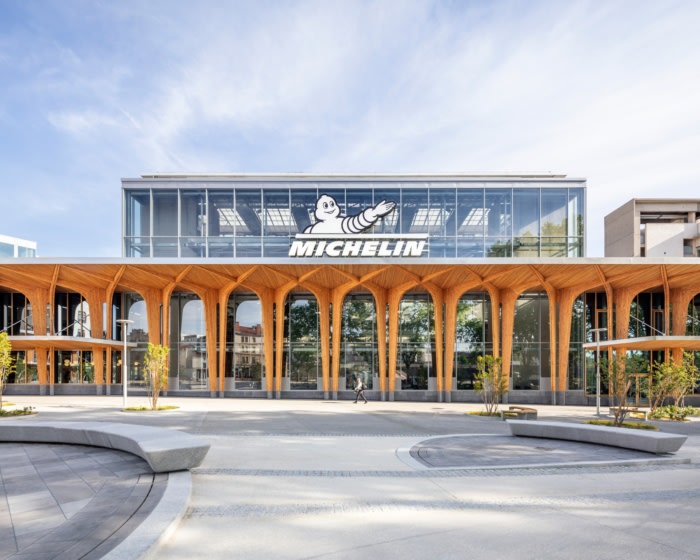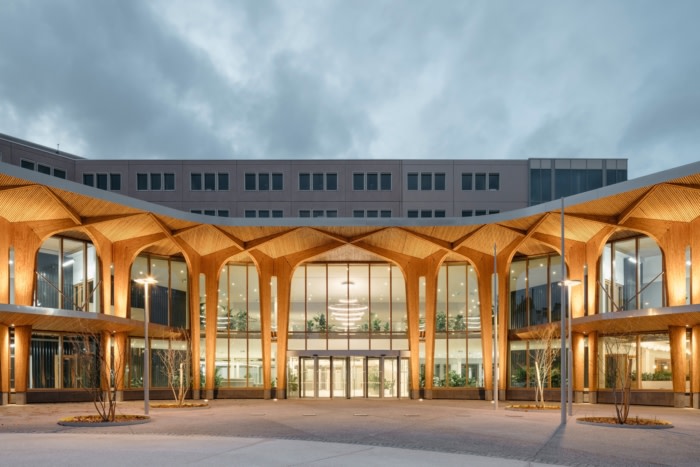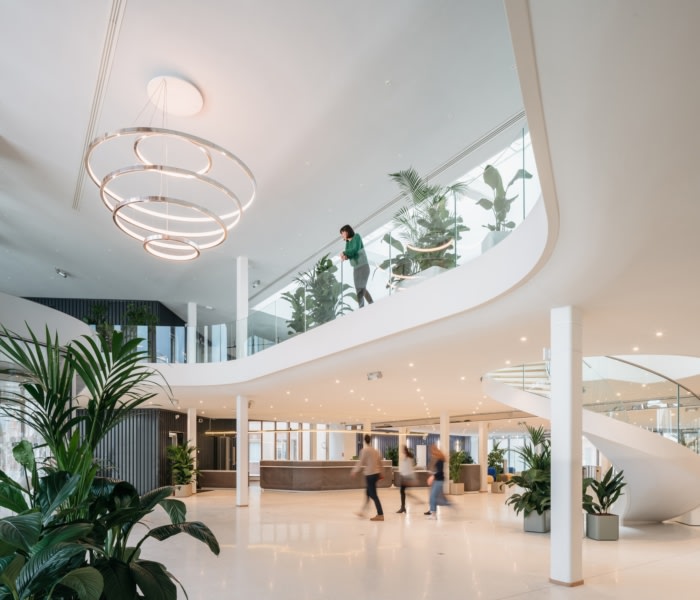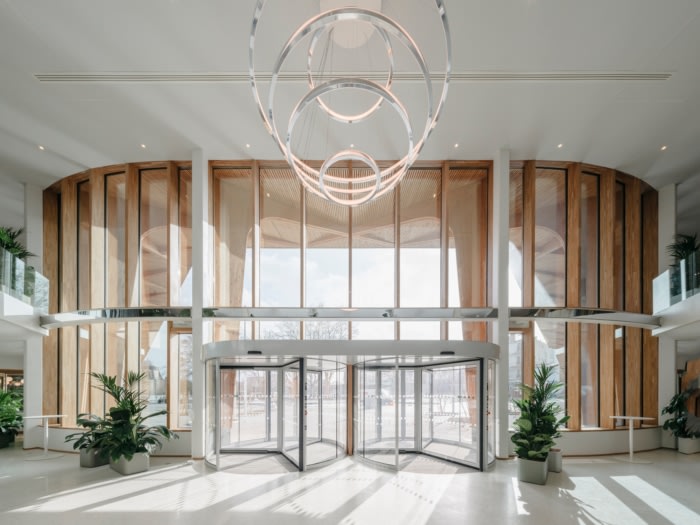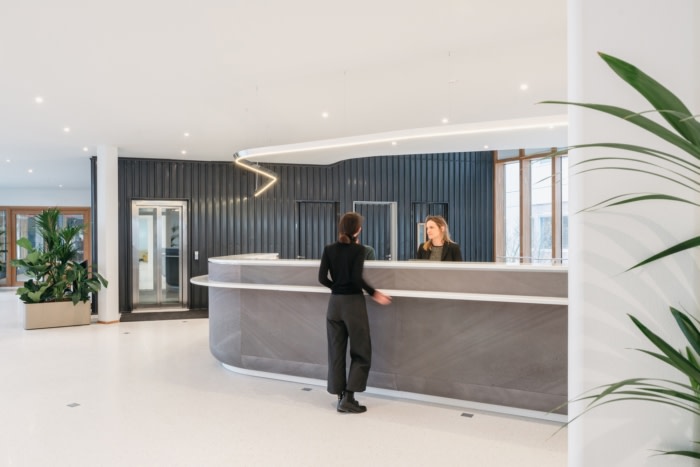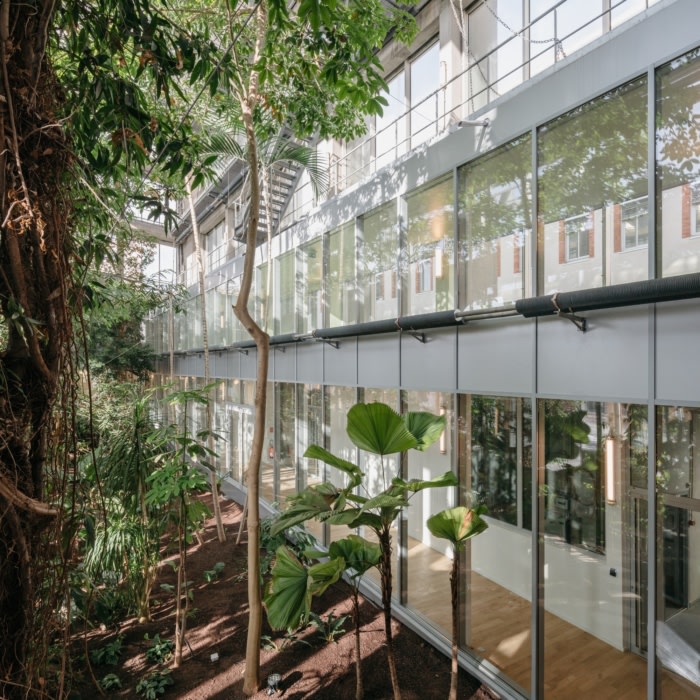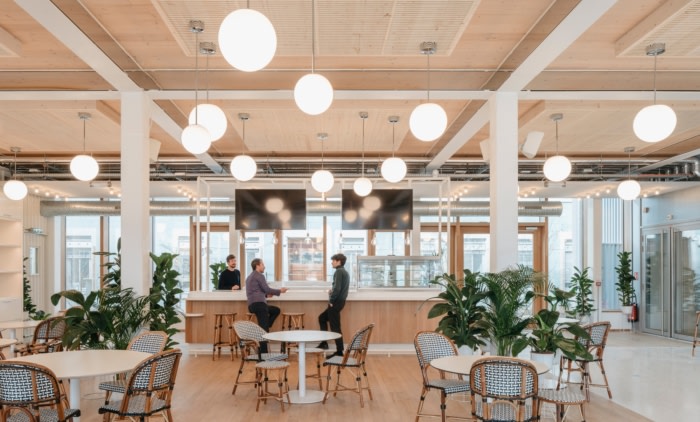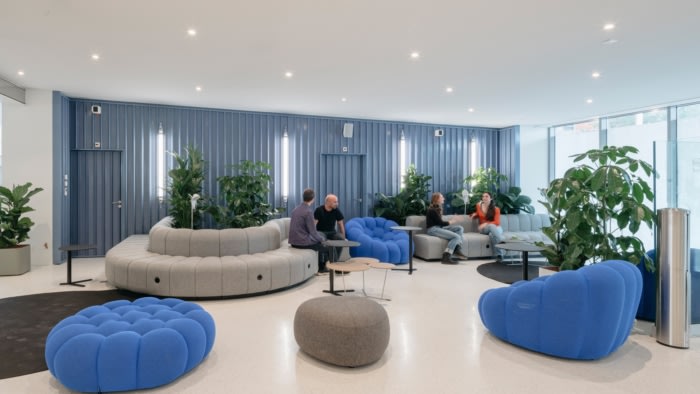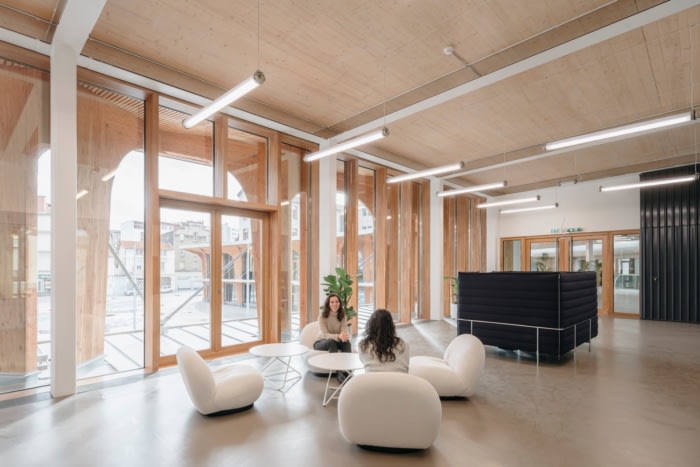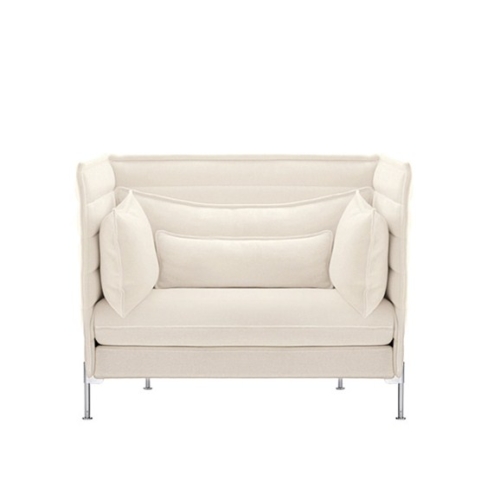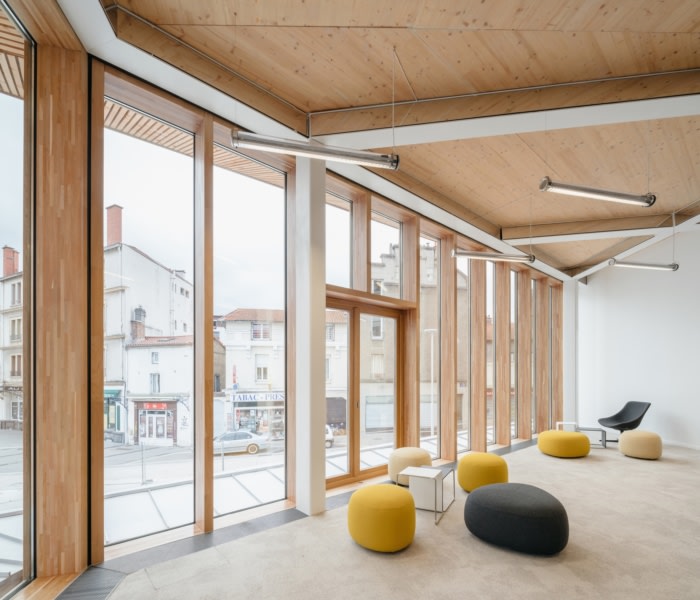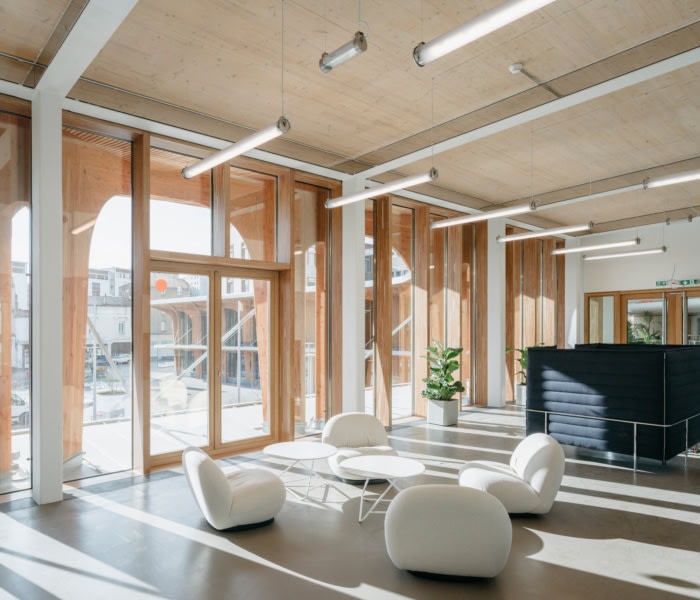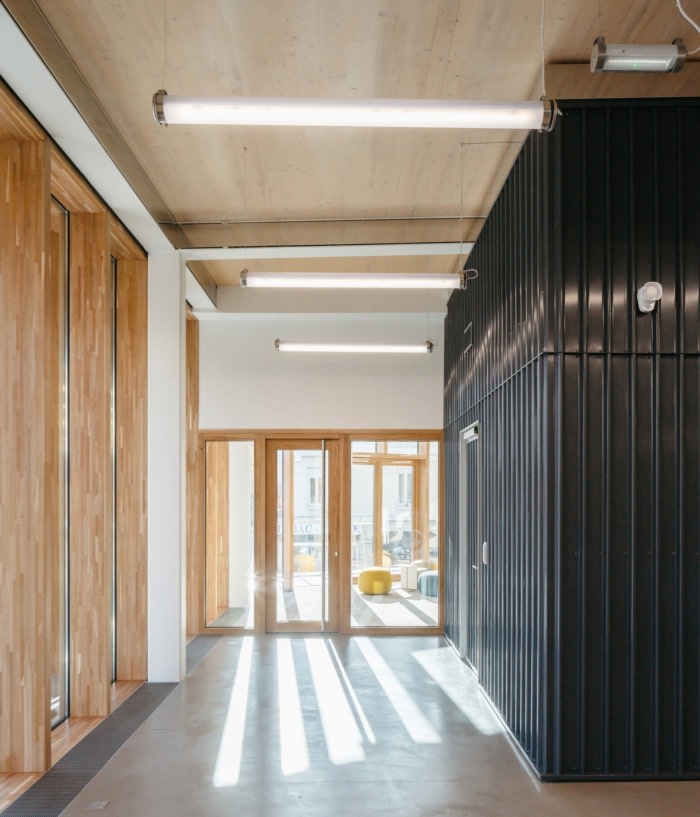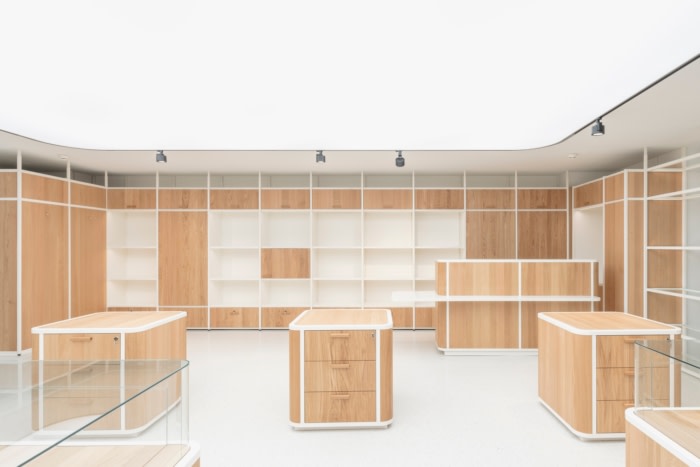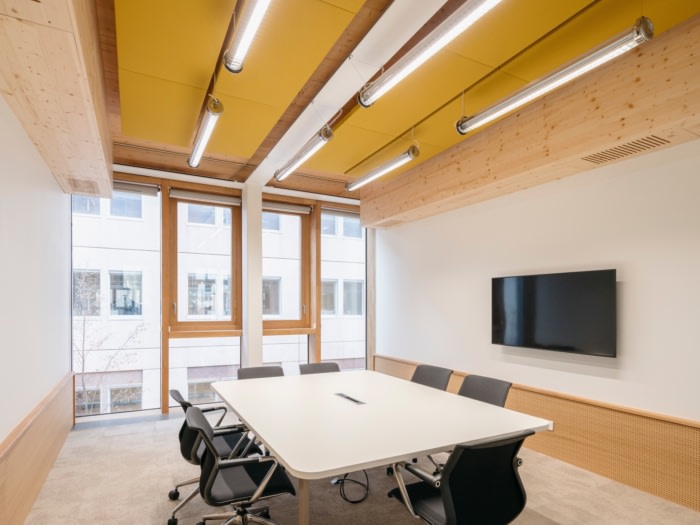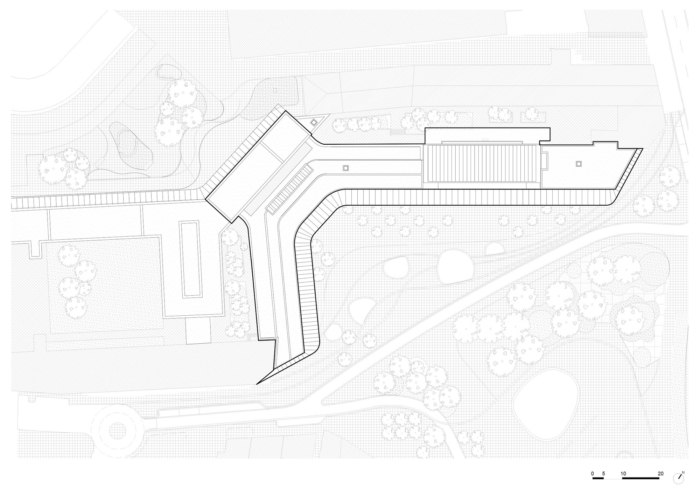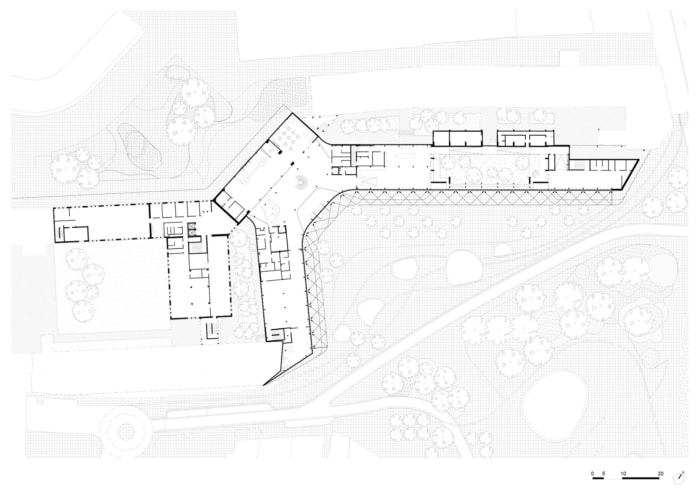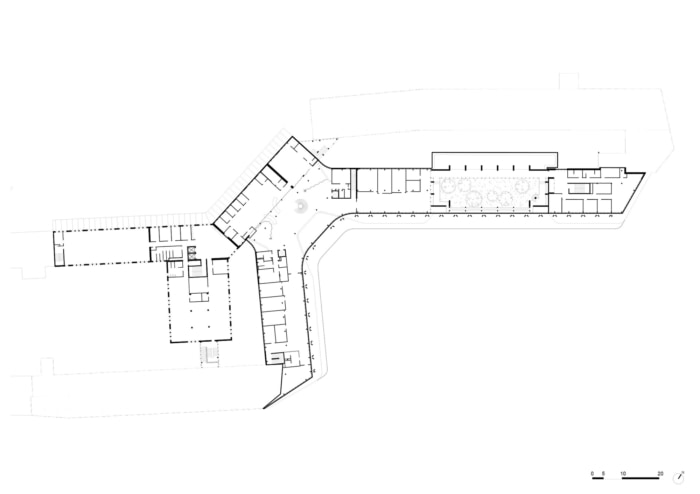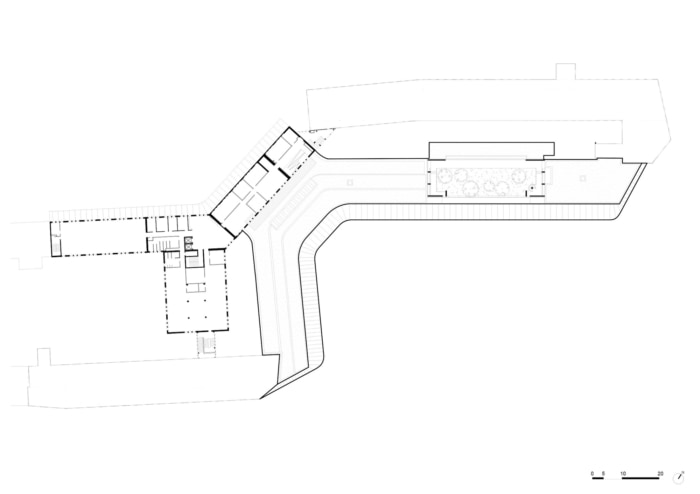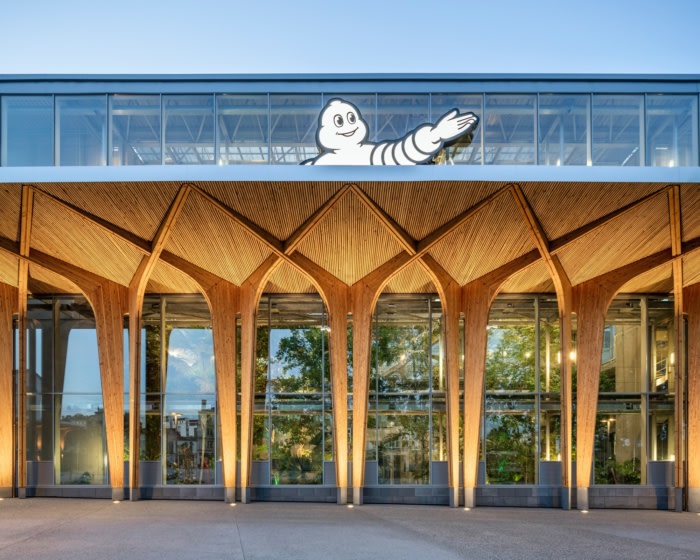
Michelin Headquarters – Clermont-Ferrand
The redesign of Michelin's Clermont-Ferrand Headquarters aims to embody the image of the group in a welcoming, unique, and cohesive space, while inserting itself in an emblematic public square.
Encore Heureux Architectes designed the Michelin Headquarters with sophistication and a strong sense of brand identity in Clermont-Ferrand, France.
Implanted on the Carmes site of Clermont-Ferrand since the company’s inception in the late 19th century, Michelin’s Canopy acquired its status as the company’s headquarters in the 2000s. The project, delivered in 2021, and carried out in partnership between Encore Heureux Architectes, Construire, and Base, aims to embody the image of the group in a welcoming, unique, and cohesive space, while inserting itself in an emblematic public square. The headquarters’ innovative new reception area symbolizes Michelin’s reinvention, conceived to face 21st century challenges head-on; a design and operation that were conceptualized from a circular economy perspective, mindful of environmental impacts.
A new identity
In order to respond to Michelin’s wish of renewing itself without erasing its past, the project’s committed position is to offer an extension of the current headquarters over two levels. The extension is provided with an energetic new façade that seeks to appreciate its historic structure. The new project connects the current buildings, while simultaneously embodying a reception area and the group’s main entrance. It also acts as a permeable interface between the company’s private spaces and the public square, the latter of which was also renovated in a development plan conducted by the city and Michelin Group. From outline to delivery, the conception of the architectural program, and of the project’s design, unfolded within the remit of an architectural consulting period. This method of continuous presence and on-site follow-up allowed for a greater understanding of the group’s identity, while introducing a mindful practice that recognized the residents’ needs and adapted the program accordingly.A multi-faceted and inventive program
The main challenge the project addressed was that of connecting heterogeneous spaces between themselves in a consistent union intended to receive thousands of visitors daily. The tropical glasshouse, initiated by Edouard Michelin on the plaza in the early 2000s, held an uncertain future; it was preserved in the architectural program and integrated into the visitor’s experience. The glasshouse features the logo, acting as a symbol of the group’s values of transparency and openness towards the city and the world.The tree-lined plaza extends to the edges of Carmes square, provided with furniture, greenery, and water displays to ensure freshness in the summertime. The Carmes site, historically reserved for Michelin employees, now offers public access. It features versatile exhibition spaces, a store, the glasshouse museum, and the welcoming Café Equateur. Working areas are adapted to new jobs and more collaborative working methods, and the order of the architectural program evolves to lead visitors from the public area to the company’s private spaces.
A design anchored in contemporary challenges
The Canopy is more than a reception building. Its structure responds to two primary challenges: transparency and proximity on the one hand, and a low carbon footprint on the other. The choice of transparency is embodied by the vast glass façade, sheltered from the sun by the wooden awnings that cover its 160-meter length, which provides the new headquarters with its unique identity. Curves are prevalent in the architectural design and furniture, mirroring those of Michelin’s tires.Consumption of cement was extremely limited, in favor of sustainably-sourced, repurposed, and local materials. Particular attention was attached to the local area, and thus an overwhelming majority of companies that worked on the construction are local. The use of regional materials was a common goal that aimed to implement simple constructive principles without compromising the site’s industrial nature, such as the use of steel for the structure, or the decision to make the grid and frames visible.
Know-how, quality, and innovation are values that Michelin embodies. They are wholly shared by the Encore Heureux and Construire agencies that suffused them into the project process. The Canopy symbolizes the new challenges sustainable mobility is faced with, while illustrating the connection that unites Michelin and the city of Clermont-Ferrand.
Design: Encore Heureux Architectes
Photography: Nicolas Trouillard, Cyrus Cornut
